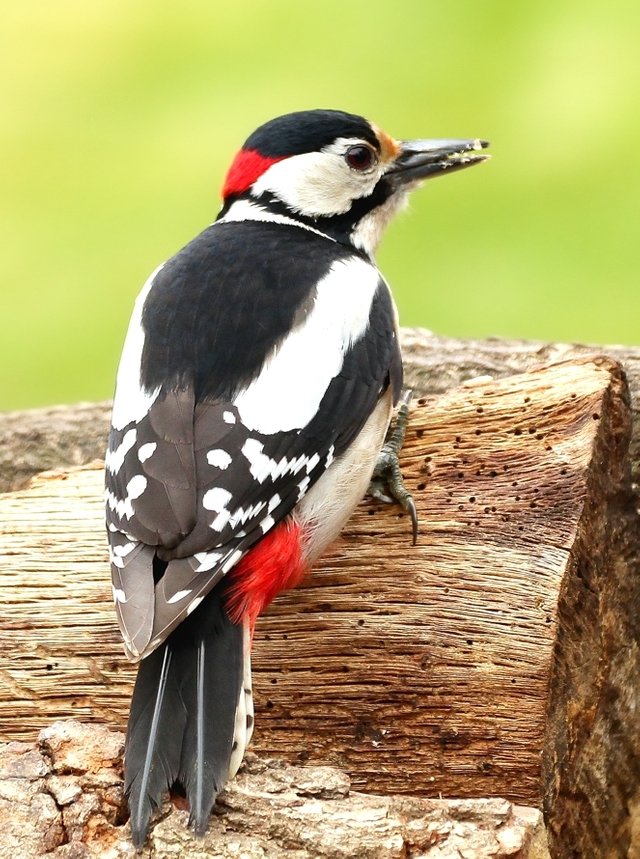Great spotted woodpecker

The spotted woodpecker (Dendrocopos major) is a medium-sized woodpecker with black and white feather-like feathers and red spots on the lower abdomen. Male and young birds also have red markings on their necks or heads. This species is found throughout the Paleobe, including parts of North Africa. It is resident in most of its range, but in the north, if conifer cones fail, some will migrate. Some people have a tendency to wander, which led to the recent recolonization of Ireland and the flow to North America. Great spotted woodpeckers dig into trees to find food or dig nests, and encourage contact and territorial advertising; like other woodpeckers, they are anatomically adaptable and can cope with physical pressure from hammering actions. This species is similar to the Syrian woodpecker.
This woodpecker appears in all types of woodland, eats a variety of foods, can extract seeds from pine cones, extract insect larvae from trees, or extract eggs and chicks of other birds from nests. It reproduces in holes dug in live or dead trees and has no lining other than wood chips. The typical clutch is four to six shiny white eggs. Both parents hatch the eggs, feed the chicks, and keep the nest clean. When young birds are fed by adults for about ten days, each parent is responsible for feeding part of the young birds.
This species is closely related to some other members of its genus. It has many subspecies, some of which are unique enough to become potential new species. It has a wide range, a large population, and no widespread threat, so it is listed as the least concerned species by the International Union for Conservation of Nature (IUCN).